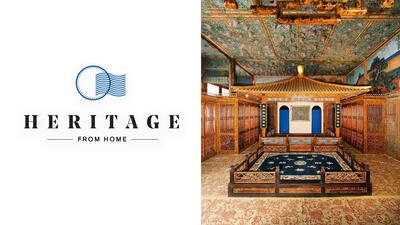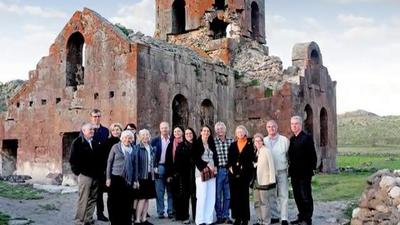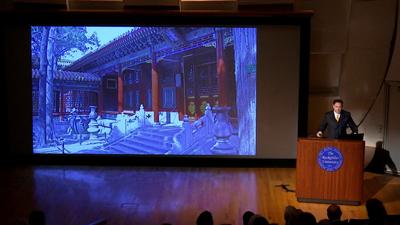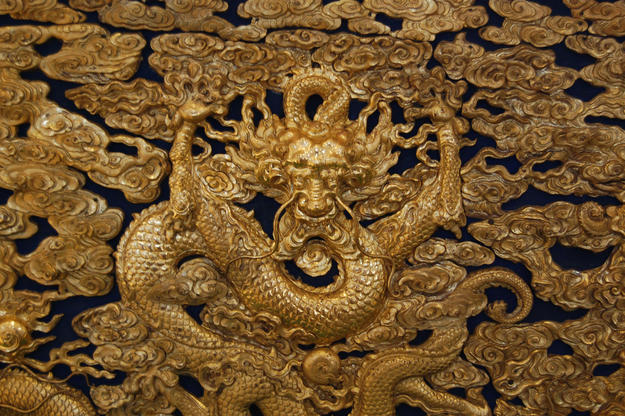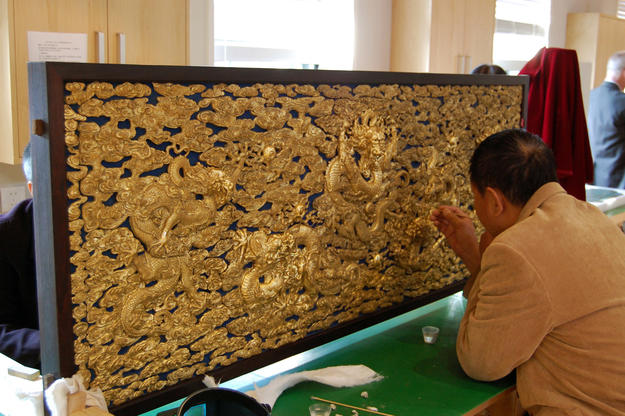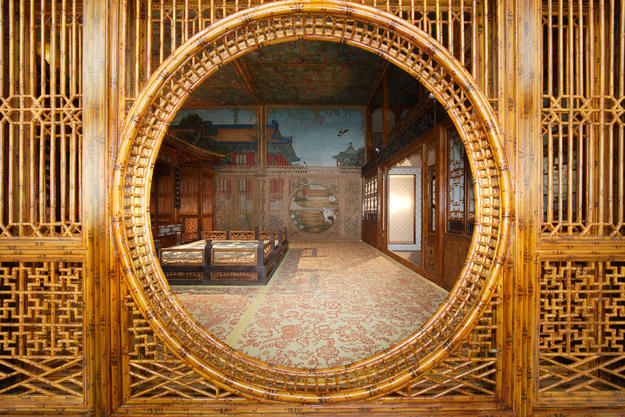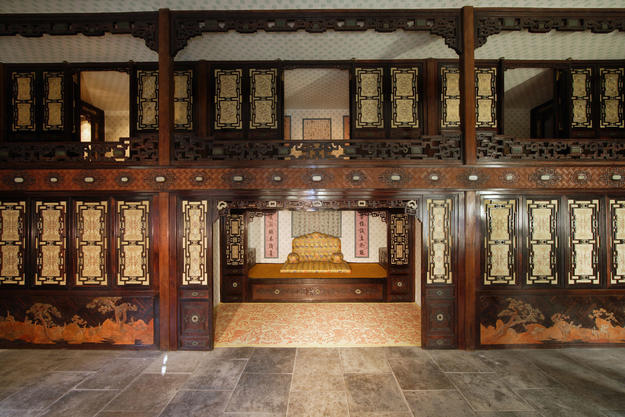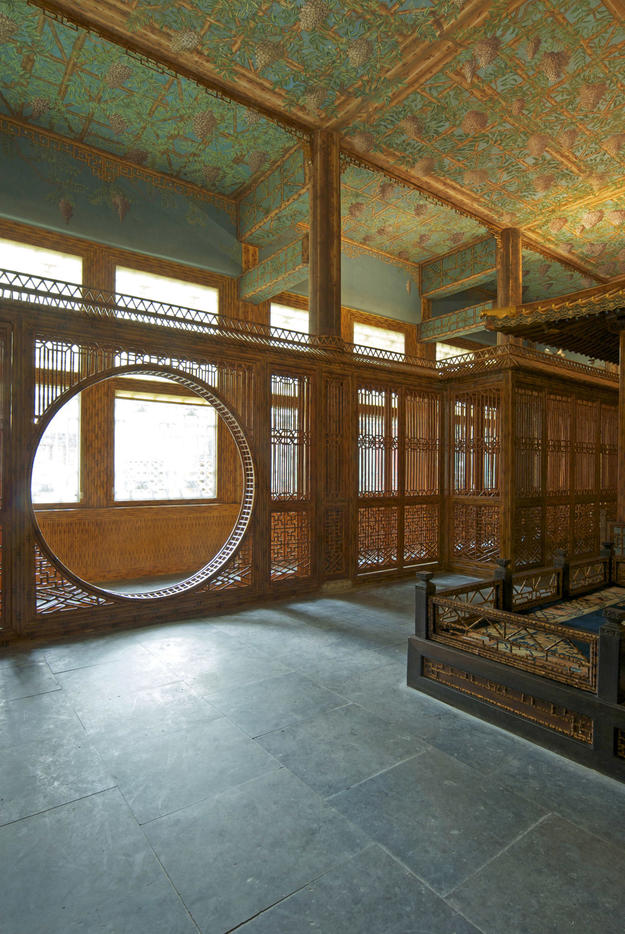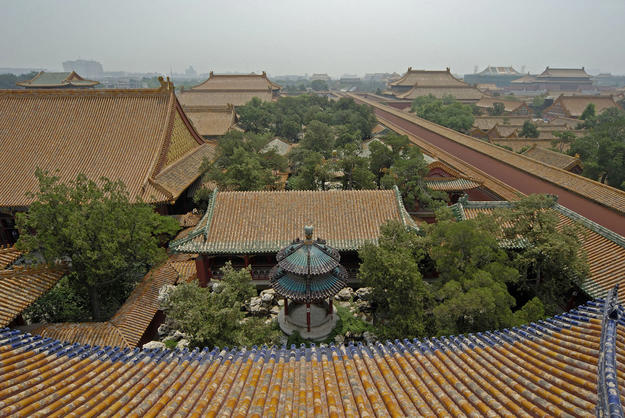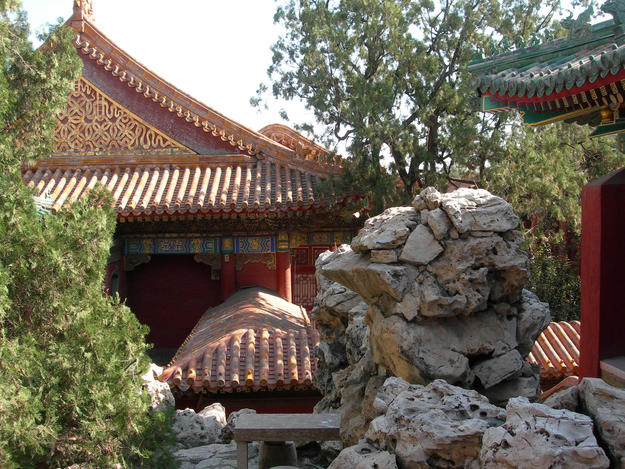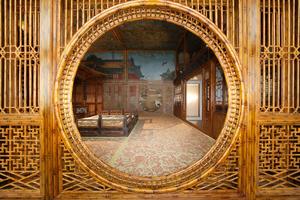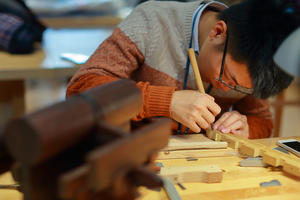Qianlong Garden Conservation Project
Site and Significance
An Extravagant Complex
Occupying almost two acres in the northeast quadrant of the Forbidden City, the Qianlong Garden was built by the fourth emperor of the Qing Dynasty (1644–1912) to serve as part of his planned retirement complex following his 60-year reign. He designed the garden as a private retreat, with four courtyards, many elaborate rockeries, and 27 pavilions and structures that contain decoration and furnishings from a time widely considered to be one of the boldest and most extravagant periods of interior design in China's history. These interiors represent the most significant exquisitely designed interiors to survive relatively unchanged from Imperial China.
The Influence of Western Art
During the Qianlong Emperor's reign (1735–1796), China was the world's largest and richest civilization, and was extensively engaged with other countries. While the impact of Chinese art and architecture on European art of this period is well known, the interiors of the Qianlong Garden demonstrate that this impact was reciprocal. The influence of Giuseppe Castiglione, a Jesuit missionary and painter who settled in China around 1715 and whose work was admired by the Qianlong Emperor, can be seen in the interior of Juanqinzhai (Studio of Exhaustion from Diligent Service) in the fourth courtyard. The interior of this building includes a personal theater for the Emperor decorated with trompe l'oeil silk wall and ceiling murals that incorporate Western artistic techniques of perspective and chiaroscuro, and is the only surviving complete room from this period to survive intact—not only in the Forbidden City but in all of China.
Following the departure in 1924 of Puyi, China's last emperor, the Qianlong Garden was closed. It remained dormant until 2000 when World Monuments Fund (WMF) and the Palace Museum signed a groundbreaking agreement to collaborate on the restoration of the Garden.
Our Involvement
Rehabilitation of the Qianlong Garden Begins
In 2002, work began on the first building, Juanqinzhai (Studio of Exhaustion from Diligent Service), and in 2004, the Palace Museum and WMF agreed to undertake a comprehensive review of the entire Qianlong Garden site and develop a master plan for its conservation.
Conservation of Juanqinzhai was completed in 2008, and conservation of the exteriors and major interiors of three structures in the fourth courtyard, including Fuwangge (Belvedere of Viewing Achievements), Zhuxiangguan (Lodge of Bamboo Fragrance), and Yucuixuan (Bower of Purest Jade), were completed in 2016. Work on the interiors and exteriors of buildings in the first, second, and third courtyards is currently underway.
A New Interpretation Center
In 2019, it was announced that celebrated architect Annabelle Selldorf, in collaboration with the Palace Museum, was selected to design an interpretation center at the Qianlong Garden, making her the first American architect to work in the Forbidden City. The interpretation center will be located in historic structures in the second courtyard of the garden. Selldorf and her NYC-based firm, Selldorf Architects, have designed the center in three distinct halls surrounding an open pavilion, each will provide visitors with a unique perspective of the remarkable complex and tell the story of its restoration.
Through this new visitor center, which is scheduled to be completed in 2025, the public will have access to guided tours of the interiors of the Qianlong Garden for the first time ever.
Learn more
World Monuments Fund safeguards cultural heritage around the globe, ensuring our treasured places are preserved for present and future generations.
Sign up for our newsletter to receive regular updates on our projects, stories from the field, upcoming events, and more!
![]()
With support from The Freeman Foundation, The Robert W. Wilson Charitable Trust, The Brown Foundation, Inc., American Friends of the Shanghai Museum, Oak Foundation, and Nora McNeely Hurley and Manitou Fund.
Videos
